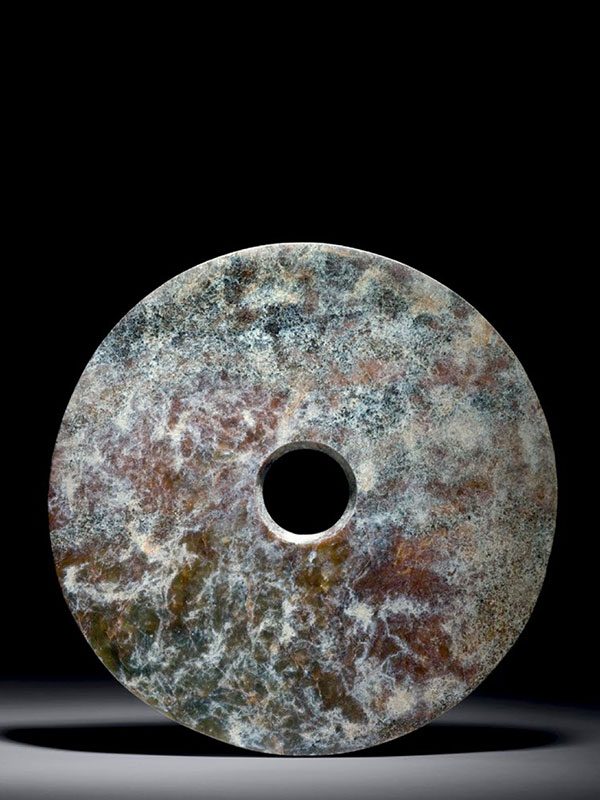Jade Disc bi
A jade bi-disc of circular form and uneven thickness. Its central, circular aperture is cut from both sides, leaving a ridge in the centre and visible grinding lines to either side of it. The stone is of predominantly dark green and red tones with strong all-over white veining. The disc is completely unadorned and the surface is well polished on both sides.
Plain, undecorated jade bi discs of large size appear to have been a specialty of jade craftsmen of the Liangzhu culture. The earliest bi discs found during the late Neolithic period are from burial sites around the East coast of China.[1] A closely comparable jade bi disc, the stone of similar dark green tone and whitish veins, was unearthed from a Liangzhu culture site at Yuhang city in 1982, and is now in the collection of the Liangzhu Culture Museum.[2] Another similar bi disc of overall greenish tones is in the collection of the National Palace Museum in Taipei.[3]
- Watson, W. The Arts of China to AD 900, Yale University Press, 1995, p. 52
- Jades of the Liangzhu Culture- The Dawn of Chinese Civilization, the Liangzhu Culture Museum and the Art Museum, The Chinese University of Hong Kong, Hong Kong, 1998, no. 17, pp. 37, 85
- A Catalogue of the National Palace Museum’s Special Exhibition of Circular Jade, Taipei, 1995, no. 48, pp. 88-9

